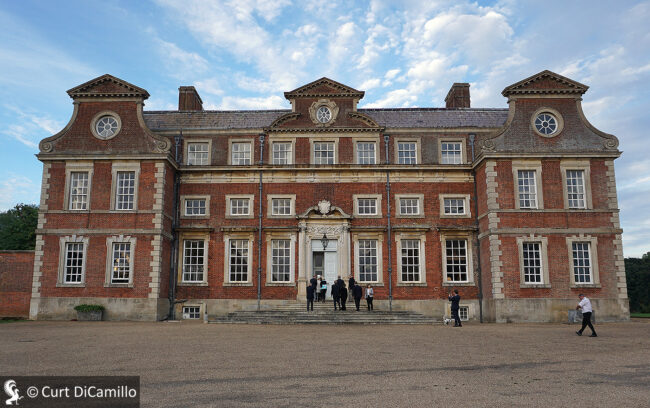
The entrance facade in 2022
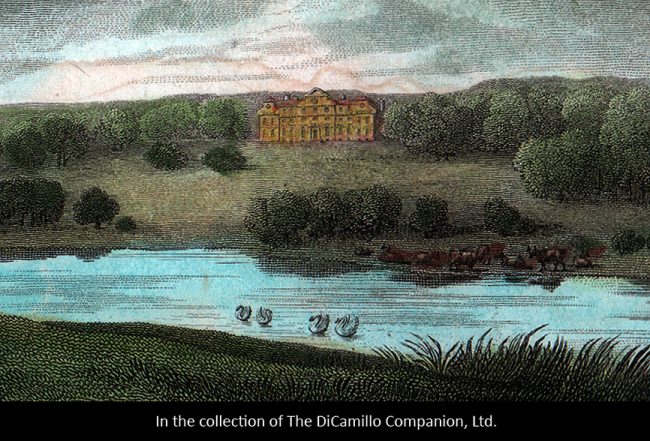
An 1819 hand-colored engraving of the entrance facade from "Excursions Through Norfolk"
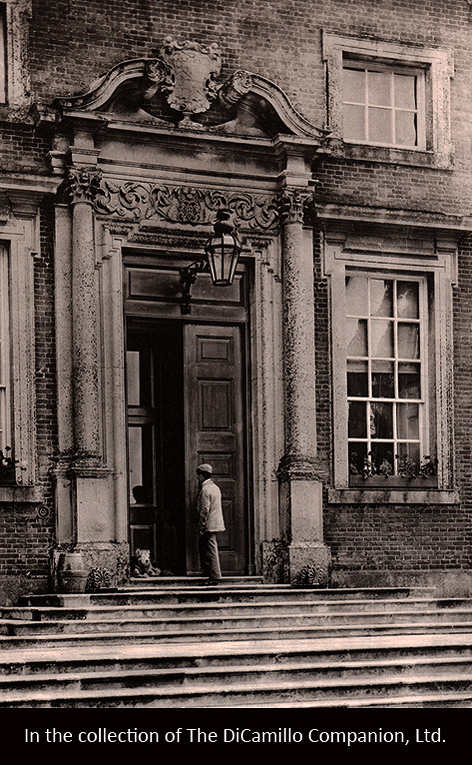
A late 19th century photogravure of the entrance facade doorway
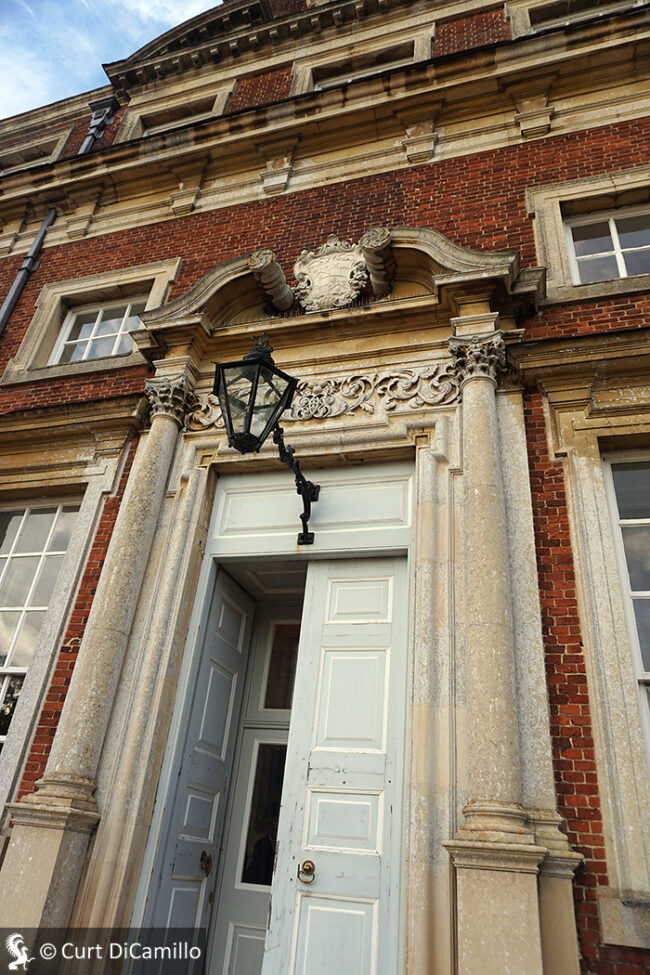
The entrance facade doorway in 2022
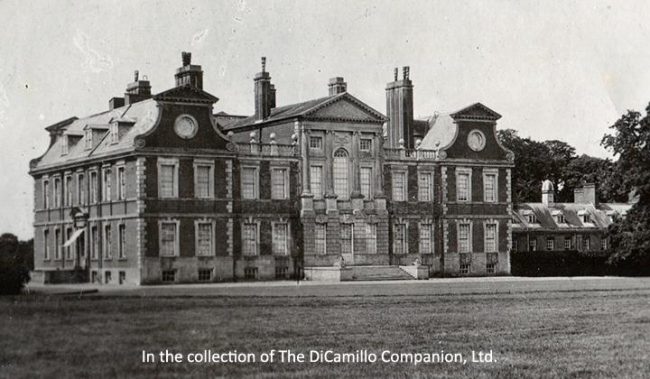
The garden facade from a circa 1920 postcard
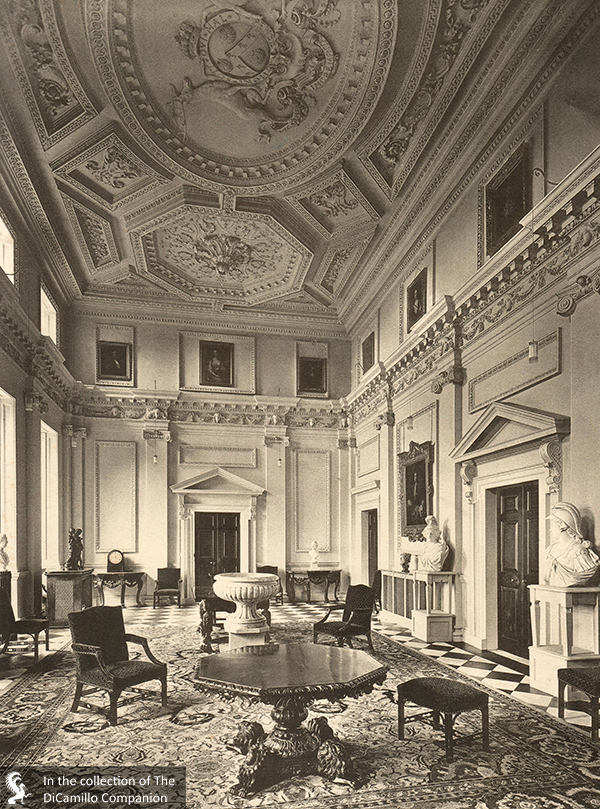
The Great Hall from a 1920 book photograph
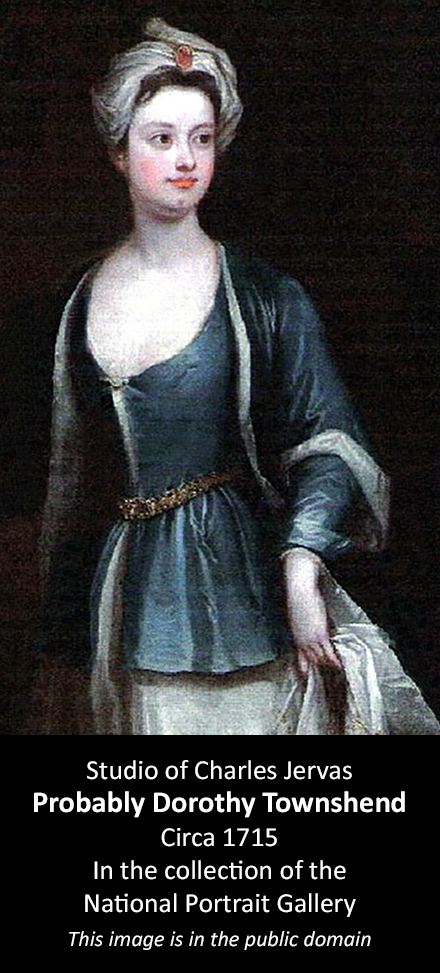
Raynham's famous Brown Lady ghost is supposedly Dorothy Townshend
Earlier Houses: There was an earlier house, near the church, that was replaced by the current house.
Built / Designed For: Sir Roger Townshend, 1st Bt.
House & Family History: The Townshend family has owned land here since the late 14th century. Sir Roger Townshend was mainly his own architect for Raynham Hall, which he designed with the help of William Edge, a draftsman and master mason (they commenced work on the house in 1619 and then restarted it on a different site in 1622). It's documented that Townshend and Edge visited London and Newmarket and studied the buildings of Inigo Jones; many architectural historians credit this trip as the influence for the Jonesian character of Raynham's design. William Talman, one of the most prominent architects of the age, produced designs for the remodeling of the east and west facades that were never executed. Raynham was altered circa 1680, followed by William Kent's early 18th century remodeling of the interiors for the 2nd Viscount Townshend. Charles II and the dukes of York and Monmouth visited the house in 1671. Raynham Hall is famous for the ghost called the Brown Lady (so named because of the brown brocade dress the specter wears), supposedly the ghost of Dorothy Townshend (1686-1726; see "Images" section). Dorothy, who grew up at nearby Houghton Hall, was the sister of Britain's first prime minister (Robert Walpole, 1st Earl of Orford) and the wife of Charles Townshend, 2nd Viscount Townshend. Legend has it that Dorothy haunts Raynham because of the actions of her husband, who went into an uncontrollable rage after he discovered that his wife had had a torrid affair with the notorious rake Thomas Wharton, 1st Marquess of Wharton, before her marriage to Townshend. In revenge, so the tale goes, Lord Townshend, who was known for his fierce temper, had Dorothy locked in an isolated room at Raynham for the rest of her life. She was supposedly never again allowed to see her seven children and there are rumors that she was starved to death. In 1815, during a visit to Raynham, the Prince Regent purportedly witnessed the Brown Lady and was so shaken by the incident that he insisted on leaving the house immediately. The first recorded sighting of the ghost took place during Christmas celebrations at Raynham in 1835, when a Col. Loftus reported seeing the Brown Lady (his claim was supported by another other guest who also witnessed the apparition). One of the most legendary sightings occurred in 1836, when the author Frederick Marryat, a friend of Dickens and a captain in the Royal Navy, was lodged at Raynham for an extended visit. One night, as Capt. Marryat and two companions walked down a hallway, they saw the Brown Lady approach them; because the specter was grinning at them in a “diabolical manner,” Capt. Marryat, believing he was in danger, drew his pistol and fired shots at the figure. The bullets passed through the ghost and the Brown Lady instantly vanished. Sightings continued to be reported until 1936, when two professional photographers, Hubert Provand and Indre Shira, were taking photos of Raynham for "Country Life" magazine. The picture they famously snapped of the Brown Lady on the staircase, which appeared in the December 26, 1936, issue of the magazine, became one of the most famous ghost pictures in the world (in the USA the photo appeared in the January 4, 1937, edition of "Life" magazine). Though the Brown Lady has not been seen at Raynham since 1936, she is rumored to haunt nearby Sandringham House and Houghton Hall. The town of Raynham, Massachusetts, incorporated in 1731, was named after Raynham Hall.
Collections: The double-height Belisarius Room, famous for its enormous Palladian window, is so-named because it once contained an 8.5-foot-tall portrait by Salvator Rosa of the 6th century AD Byzantine military commander Belisarius. A gift from Frederick the Great to the 2nd Viscount Townshend, the painting was sold in March 1904 as part of a major four-day sale of silver, paintings, and furnishings from Raynham Hall. The portrait of Belisarius is today in the collection of Renishaw Hall.
Architect: Thomas Ripley
Date: Circa 1727-31Architect: William Edge
Date: Circa 1619-30Architect: Roger Townshend
Date: Circa 1619-22Architect: William Kent
Date: Circa 1727-31John Preston (J.P.) Neale, published under the title of Views of the Seats of Noblemen and Gentlemen in England, Wales, Scotland, and Ireland, among other titles: Vol. III, 1820.
Country Life: XLVII, 760 plan, 1920. XXIV, 90, 1908. LVIII, 742, 782 plan, 1925.
Title: Raynham Hall: An English Country House Revealed
Author: Ridgdill, Michael
Year Published: 2018
Reference: pgs. 88, 202
Publisher: Suffolk: ACC Art Books Ltd.
ISBN: 9781851498604
Book Type: Hardback
Title: Biographical Dictionary of British Architects, 1600-1840, A - HARDBACK
Author: Colvin, Howard
Year Published: 2008
Reference: pgs. 341, 616, 871, 1014
Publisher: New Haven: Yale University Press
ISBN: 9780300125085
Book Type: Hardback
Title: Burke's & Savills Guide to Country Houses, Volume III: East Anglia
Author: Kenworthy-Browne, John; Reid, Peter; Sayer, Michael; Watkin, David
Year Published: 1981
Reference: pgs. 172-173
Publisher: London: Burke's Peerage
ISBN: 0850110351
Book Type: Hardback
House Listed: Grade I
Park Listed: Grade II
Current Seat / Home of: Charles George Townshend, 8th Marquess Townshend
Past Seat / Home of: SEATED AT CURRENT HOUSE: Sir Roger Townshend, 1st Bt., until 1637; Sir Roger Townshend, 2nd Bt., 1637-48; Sir Horatio Townshend, 3rd Bt., 1st Baron Townshend, and 1st Viscount Townshend, 1648-87; Charles Townshend, 2nd Viscount Townshend, 1687-1738; Charles Townshend, 3rd Viscount Townshend, 1738-64; George Townshend, 4th Viscount Townshend and 1st Marquess Townshend, 1764-1807; George Townshend, 2nd Marquess Townshend and 1st Earl of Leicester, 1807-11; George Ferrars Townshend, 3rd Marquess Townshend and 2nd Earl of Leicester, 1811-55; John Townshend, 4th Marquess Townshend, 1855-63; John Villiers Stuart Townshend, 5th Marquess Townshend, 1863-99; John James Dudley Stuart Townshend, 6th Marquess Townshend, 1899-1921; George John Patrick Dominic Townshend, 7th Marquess Townshend, 1921-2010.
Current Ownership Type: Individual / Family Trust
Primary Current Ownership Use: Private Home
House Open to Public: Limited Access
Phone: 01328-862-133
Email: [email protected]
Website: https://www.raynhamrecitals.co.uk/
Historic Houses Member: No